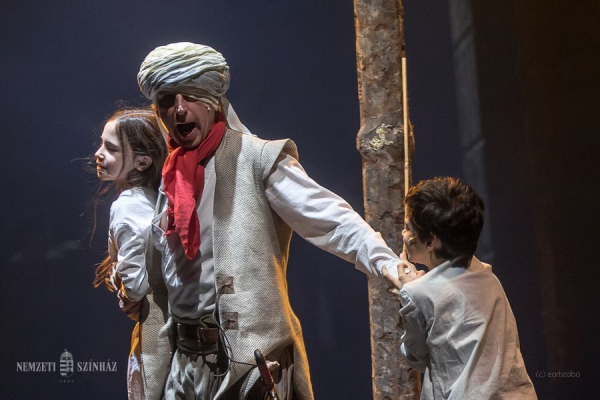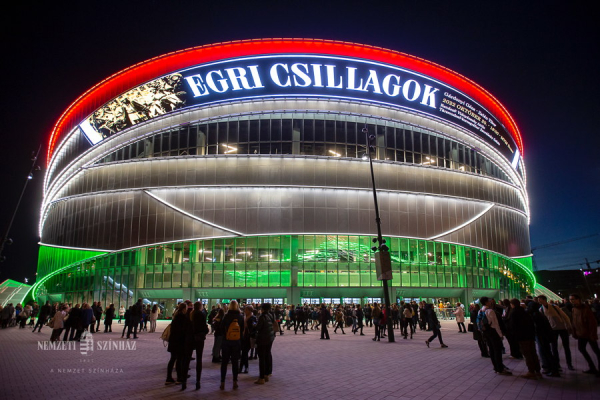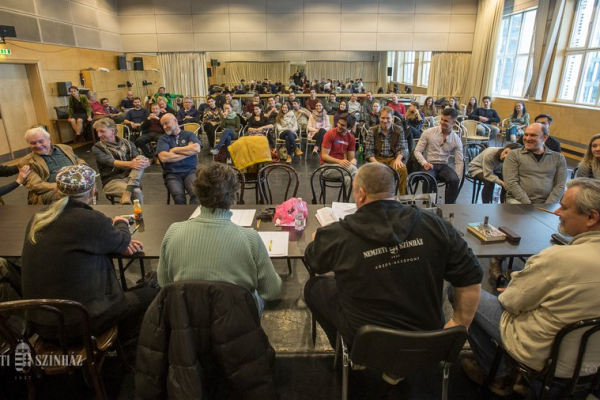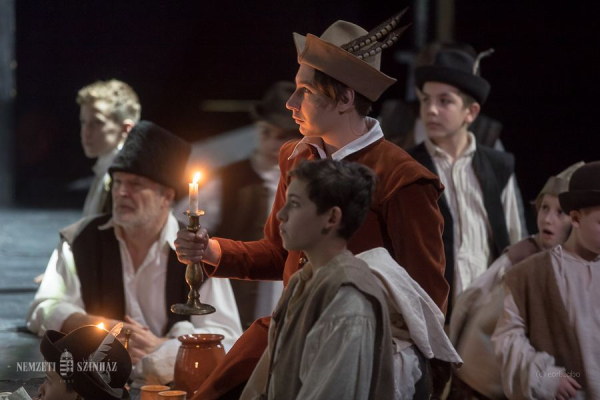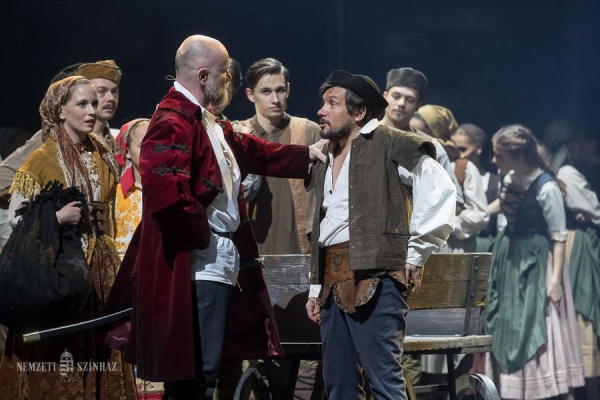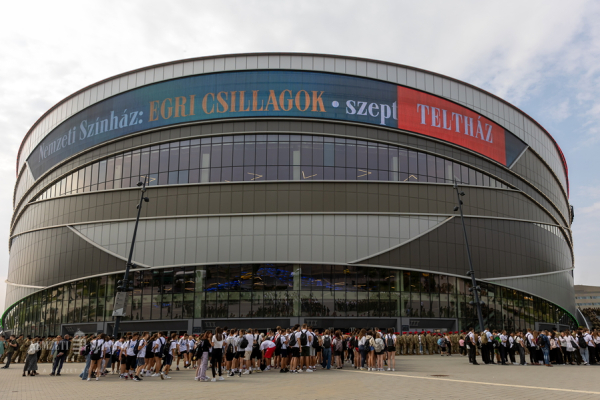
The Stars of Eger 12
“Young people need heroes and role models even today. Great deeds and grand emotions still move their fancy. I feel that it’s important to step out of everyday life and to tell pure stories in a fast-changing world full of uncertainty and without any points of reference.
Gárdonyi’s novel is a truly great story about love, loyalty (and treason), courage, patriotism, heroism, and coming of age…
We are not adapting the novel for the stage, but looking for a special vantage point from which to present Géza Gárdonyi’s story to young people in a valid way, so that all the emotions, deeds and adventures that make the novel so enjoyable should be included. We’ll see the story from the point of view of a group of children in the castle watching from a safe place (locked up there by the adults to keep them out of harm’s way during the siege)… We see the story of the adults – Gergő Bornemissza, Éva Cecey, Dobó, Youmourjuk and the others – through their eyes. And perhaps, the children might even alter the course of history,” says Attila Vidnyánszky.
***
I am holding the ninth edition of Stars of Eger in my hands. Illustrated in colour and in black-and-white by Ádám Würtz and issued by the Móra publishing house in 1966, I have read this book so many times—and then passed it on to my daughter, Sára, who says to have read it seventeen (!) times in her teens—that it is mostly in shreds by now. Made of beautiful fabric and apparently showing Gergely Bornemissza as he stabs the Sun with his sword, the cover did not make it through the last couple of uses (which I admit to be my fault) and is now flapping in its death throes on the rather large-size book. The pages are full of indecipherable notes, additions, circled words and underscored quotes. In a word, I really left my mark on this highly valued treasure of a book.
One might miss the fact that the book, which I only want to use as raw material for the play and not follow its content very closely, has a secondary title as well, right below the main title: The life of Gergely Bornemissza. Behold the grand lie of our shared memory about the book! We all, who have read Gárdonyi's book, have come under the illusion that the story is about the siege of the Castle of Eger, about the heroism of Dobó, Mekcsey, Bornemissza and so on, and yet it is not, or not only. Made up of five parts, only the last couple of chapters are actually about the siege, while the first three chapters discuss the childhood, youth and heroic adventures of Gergely Bornemissza, whom we follow to Istanbul in his quest to save Bálint Török. Therefore, all that is significant and emphatic in the book must be included in the play as well.One thing I already know for sure is that the play must definitely be built upon the siege of the castle. To put it differently, the siege must contain all the action. Employing the flashback technology, which is well-known and well-received among the young people of today, I can easily use the structural breaks of the play to recall past events, without making them look forced or misplaced. I am going to present the pivotal scenes of the life of Gergely Bornemissza as well as historical events from the time of the Ottoman occupation of Hungary, such as the sacking of Buda. Also, some of the most recognizable and influential personalities of the age, such as Bálint Török, friar George, Miklós Zrínyi or the widowed queen will also have significant role in the story.
In addition to the more obvious and collective thrills of the siege, I will lay emphasis on the emotional aspects of the story as well. Jumurdzsák and his talisman ring draws a bloody red line across the story, and no adaptation would be complete without the traitorous lieutenant Hegedűs being meted out his well-deserved punishment. I intend to shed light on the significant role of the heroic women of Eger as well, not forgetting the children and the young who have been at times documenting and witnessing the events of the siege and at times intervening in the fight, with deeds and courage comparable to that of the teenagers who took up arms in the Uprising of 1956.
Besides my personal attachment to the story, I have to main goals — to provide meaningful entertainment to those who have read the novel and to provide additional incentive to those who haven't read it yet.
Tibor Zalán


